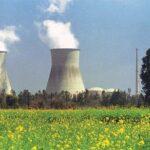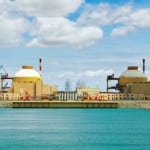U.S. Secretary of State Condoleezza Rice and Pranab Mukherjee, her Indian counterpart, signed a pact Friday that allows U.S. equipment and service providers to support India’s plans to increase the country’s nuclear capacity.
The accord seals the “123 Agreement,” an historic deal that lifts a 34-year-old ban on U.S.-Indian civilian nuclear trade. After three years of political negotiations, the U.S. Senate ratified the agreement (86–13) on Oct. 1, and last Wednesday, President Bush enacted it.
The U.S. deal comes on the heels of an equivalent agreement France made with India last month.
India may spend as much as $175 billion over the next 25 years expanding its nuclear industry to cope with rising energy demand, said the U.S.-India Business Council, which promoted the U.S. deal.
Soon after the India-French nuclear deal, Indian newspapers indicated that up to six AREVA EPR units could be built in the state of Maharashtra. Their total rating of 9,600 MW could more than double Indian nuclear capacity, Business Line reported.
The Indian media has speculated that the nation could increase its nuclear capacity 15-fold by 2030—to over 60,000 MW from the present 4,120 MW.
But, according to a study carried out by Bangalore-based Centre for Study of Science, Technology, and Policy (CSTEP), such a massive capacity expansion would require a nuclear power program that would import, at minimum, 30 to 40 light water reactors (1,000-1,600 MW each) within the next two decades.
In its report “Nuclear Power in India: The Road Ahead,” the nonprofit think tank assessed whether India has the industrial infrastructure to pursue such an ambitious program. “It hasn’t presently, but is capable of quickly ramping, especially when it comes to manufacturing. The industrial growth in the automobile sector in the past decades and the building of quality are signs of encouragement,” it said.
The availability of an adequate number of skilled workers will also be a challenge, the study predicted. The nuclear program would require close to 100,000 skilled personnel of various education levels. India would have to “significantly augment” the training facilities around the country to cater to construction and operation of the large number of PHWRs (pressurized heavy water reactors), FBRs (fast breeder reactors), AHWRs (advanced heavy water reactors) as well as the LWRs (light water reactors).
Several other issues would also require careful resolution. These include the government’s setting up an effective regulatory mechanism to ensure safety and security, establishing clear civil liability measures, and dealing with nuclear waste.
“But all these [concerns], we believe, are secondary and can be addressed, to the country embarking on a nuclear power mission, similar to what France adopted in the 1970’s when it was hit by the oil crunch,” the study added optimistically.
India currently relies on coal and liquid fuels to produce much of its power—and it is experiencing a 15% shortfall of demand in peak hours, Reuters has reported.
Eager to “start work” on new nuclear projects as soon as next year, the country’s monopoly Nuclear Power Corp. has tentatively picked four suppliers and aims to begin final negotiations with them, according to a Bloomberg report. These include U.S.-based Westinghouse Electric Corp. and General Electric, France’s AREVA, and Russia’s atomic energy agency, Rosatom.
Sources: Business Line, The Hindu, The Times of India, CSTEP, Bloomberg, Reuters









